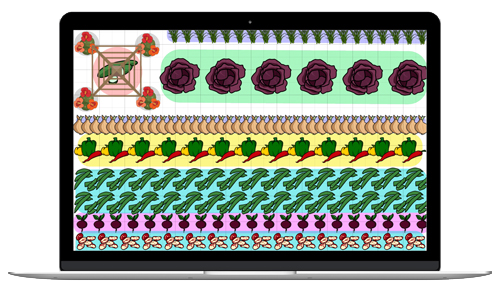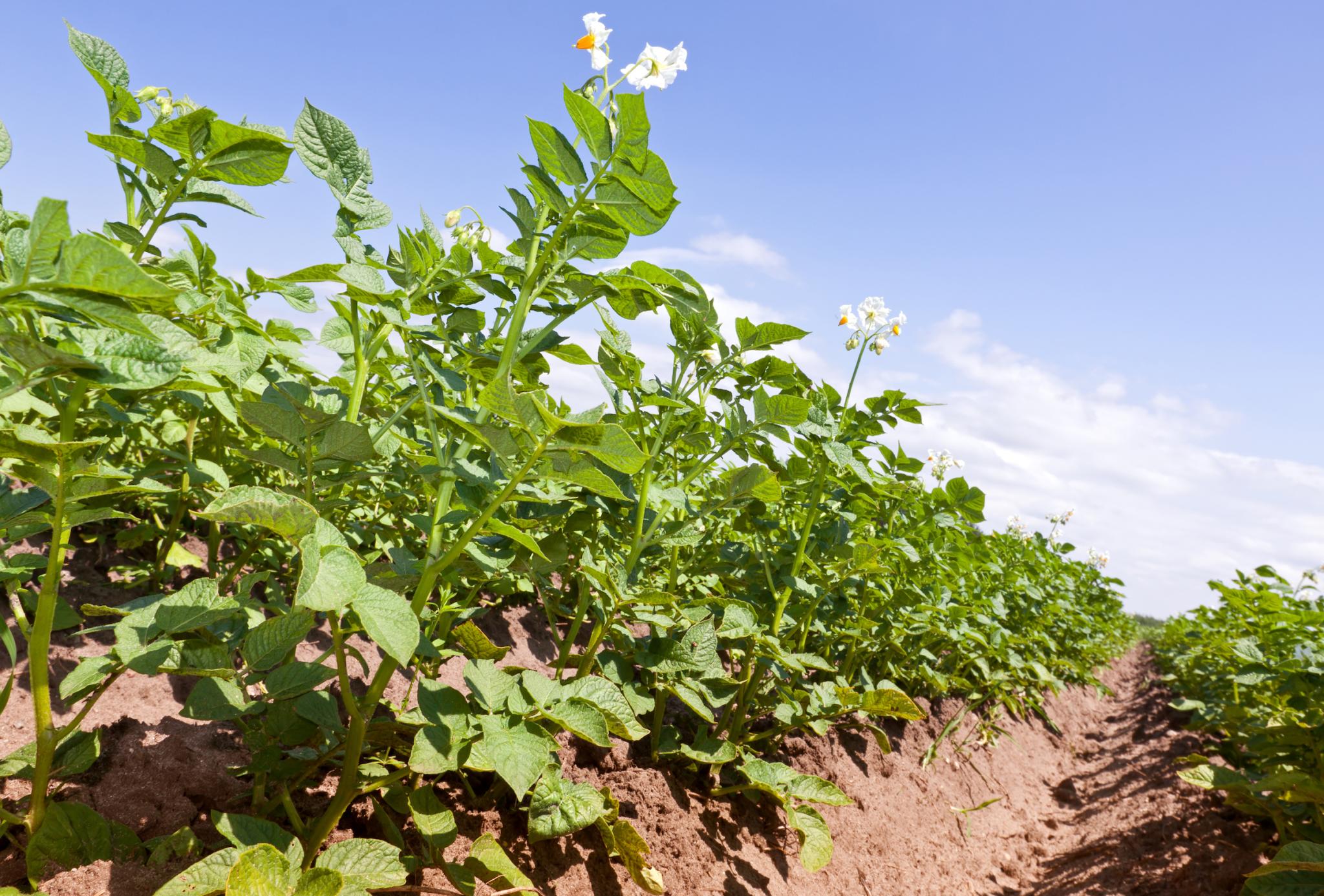
Planting, Growing, Harvesting, and Storing Potato Plants
The Almanac Garden Planner - Use It Free for 7 Days!
Plan your 2025 garden with our award-winning Garden Planner.
There are three classifications for potatoes based on when you harvest (vs. when you plant). If you harvest for storage, be sure to choose the right type:
- Early-season potatoes: first to be planted in early spring. Grow quickly (60 to 80 days), ready to harvest by early summer, tender flesh, thinner skin, store up to a few weeks.
- Mid-season potatoes (aka second early potatoes or “earlies”): mature in 80 to 100 days, typically lifted up from second half of summer, store up to a month.
- Late crops: mature in 100 to 130 days, best for storing, lasting 2 to 3 months in the right conditions; planted in August and harvested in fall.
Also, decide on the texture and flavor of your potatoes, and how you’d like to eat them:
- Dry-fleshed, mealy potatoes like russets and long white potatoes are used for baking, frying, and mashing. As mashed potatoes, they will not be gluey, and they will absorb gravy, butter or sour cream.
- Moist, waxy, round potatoes are great in soups, curries, frittatas, and salads because they don’t fall apart when cooked. You can pan-fry leftover boiled potatoes. When you mash waxy potatoes, they can become sticky.
- Red-skinned potatoes are often used for boiling or for potato salads.
Some popular potato varieties, such as ‘Yukon Gold’, fall somewhere in between truly waxy and mealy.
There are over 100 potato plant varieties! Go beyond the Idaho potato to explore more exotic and delicious options. See our article on choosing the best potato varieties!
Early Varieties:
- ‘Irish Cobbler’: tan skin, irregular shape (great heirloom potato for delicious mashed potatoes!)
- ‘Red Norland’: deep red skin, sweet, delicate flavor, great in potato salads or boiled
- ‘Mountain Rose’: red skin and pink flesh, resistant to some viruses
Mid-Season Varieties
- ‘Yukon Gold’: popular, tan skin and buttery-yellow flesh, mid to large size
- ‘Red Pontiac’: red skin, deep eyes (easiest and most adaptable red potato there is to grow)
- ‘Viking’: red skin, very productive
- ‘Chieftan’: red skin, resistant to potato scab, stores well
Late Varieties
- ‘Katahdin’: tan skin, resistant to some viruses
- ‘Kennebec’: tan skin, resistant to some viruses and late blight
- ‘Elba’: tan skin, large round tubers, resistant to blight and potato scab
- All Blue Potatoes
- ‘Fingerling Salad’ potatoes
Cooking Notes
Potatoes can be prepared in many ways: boiled, mashed, cut into pieces and roasted, french-fried, scalloped, made into dumplings or pancakes, grated into hash browns, and even brewed as alcoholic beverages.
Most potato dishes are served hot, but some are first cooked, then served cold, notably potato salad and potato chips.
ADVERTISEMENT
I just dug up some golden Yukon's for diner. Some of the potatoes have brown spots in the middle and they are hollow. what am I doing wrong its the second year that its happened . what am I doing wrong
Hello)
Also a first timer here at potatoes, if I bury a cut up potatoe and its started giving roots, is it ok to put it back or is that the end of my seed)
Thanks)
First time planting potatoes. Bought Burbank Russet seed potatoes. Planted them on July 5th. Tall and green. I have not done anything else, except plant them. There were no instructions with the potatoes. I am in Ottawa, Canada, Zone 4. They are in partial shade. Do I need to hill them up? When should they be ready to harvest?
Hi there,
I live in Alberta, Canada - I planted "late season" potatoes just over a month ago. I have super tall, green leafy stems, some of which are about to flower - I have never planted potatoes before. Do I dig for potatoes now, or do I wait until they have all flowered?
Hi Kelly, We're here to help! You do not harvest your potatoes until those vines have died. After you harvest them, they can sit for a week or two at 65° to 70° F to cure. Then store them in a root cellar or where the temperature will be 35° to 40° F if you want them to keep through the winter.
When harvesting, is there a way to determine by sight, which is(was) the "seed" potato that I should not eat? Will it be the only potato which has growth (stalk?) coming out of it?
Yes—your seed potato will have a stalk coming out of one end. If you plant pieces of potato (pieces with "eyes") the seed portion will be the one with the flt surface where it was cut before planting.
Don't eat the seed potato. Put it into your compost; it has done its job.
I'm wondering if you've ever tried or know about planting short season potatoes in the garlic plot (after garlic has been harvested in early July) for a fall potato harvest. I live in MA and am trying to make the best use of raised garden beds.. If I base last frost date on your chart, it's the first week of October. If the first comes earlier can I cover the plants at night? Thanks!
There are potatoes that can be planted in late summer and will mature in about 120-135 days. Katahdin, Kennebec, Bintje and fingerling potatoes are all suitable. You can cover the tops if you get an early frost.
I have 1 potato plant in a container. 2 weeks ago I took a few delicious ones out and reburied the plant. Now it's original growth is almost completely died off. A shoot from the base of the plant has now grown to equal size of the original and just flowered. If I wait to harvest all at once will the original ones be rotten? Should I harvest now and have the newest ones be too young?














